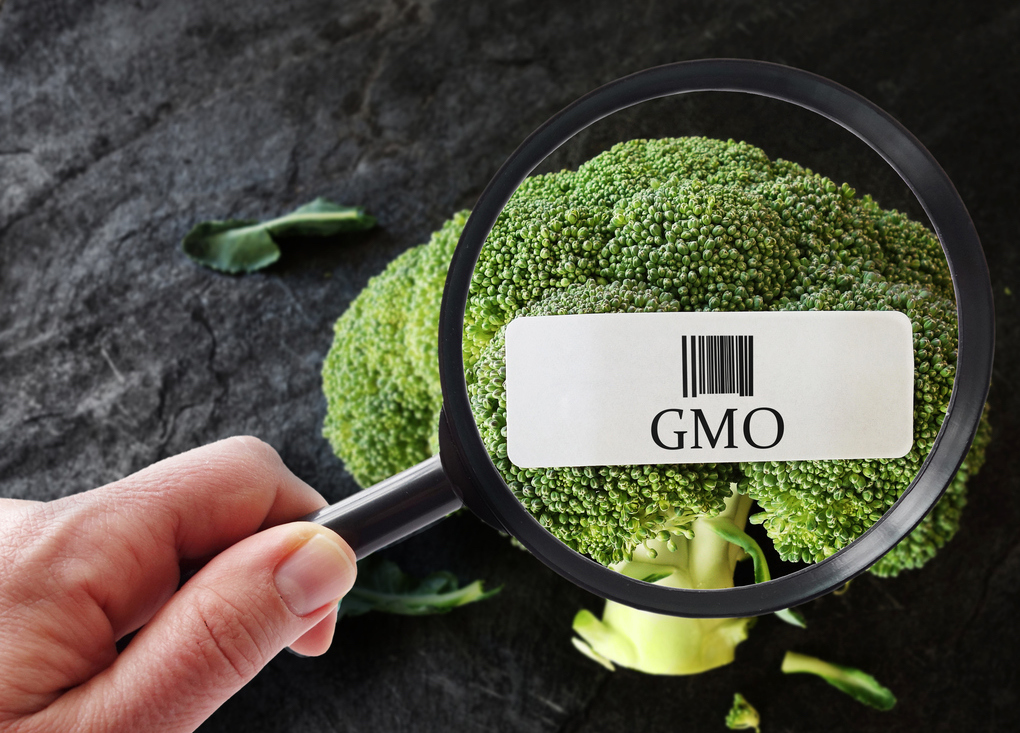
iStock
Shoppers have long wanted to see labels on foods that contain genetically modified ingredients (commonly known as GMOs). Scientists and food manufacturers, however, have tended to oppose such labels, fearing they could be misperceived as a warning, or an indication that a labeled food is less safe than one that doesn’t display a label. Politicians have shared that concern. It took a decade of battles in the state legislature before a pioneering Vermont law requiring labels on foods containing GMO ingredients went into effect in 2016. (The federal government implemented a nationwide labeling policy later that same year, which could take effect by 2020.)
But a new study out on Wednesday from The University of Vermont has found that GMO disclosure labels might not scare consumers as much as was originally feared. In fact, the labels might actually improve their attitudes.
Before we get to those findings, however, let’s look into the origins of this fierce debate over labeling on foods that scientists have mostly agreed is safe to eat.
Now, about those findings. Jane Kolodinsky, an applied economist at the University of Vermont and one of the study’s lead authors, is the first to probe whether consumer perceptions have changed since Vermont’s label mandate became official. She analyzed the responses of consumers who were asked to rank their attitudes about the use of GMOs in food on a scale of one (“strongly support”) to five (“strongly oppose”) between 2014 and 2017. She then compared those results to a national consumer survey, led by Purdue University economist Jayson Lusk, that asked similar questions. All told, 7,800 people were surveyed.
In Vermont, Kolodinsky found, opposition to GMO food fell significantly after the labeling law went into effect—by 19 percent. In the rest of the country, where the federal labeling law was not yet in effect, opposition continued to rise.
It’s important to note that labels don’t attempt to explain the science behind GMO ingredients. In Vermont, the labels merely alerted consumers to their presence.
In that way, GMO disclosure labels are similar to the mandatory labels that appear on foods that were previously frozen, made from concentrate, pasteurized, or irradiated. In the case of irradiation, when the Food and Drug Administration (FDA) mandated labeling in the 1980s, it was not because the process was unsafe, but because consumers demanded it, an advocate told The Atlantic.
Kolodinsky has studied attitudes toward GMO foods since 2003. She told The New Food Economy that consumers already have their minds made up when it comes to how they feel about the technology.
“There’s a whole variety of reasons,” she said, why a consumer might not like GMO foods. “‘I would like to support small-scale agriculture,’ for example, or ‘I would like to support the organic industry,’ or, ‘somewhere in my background, I feel that there are issues with where equity is in the food system.’”
When shoppers go to grocery stores, she says, those opinions don’t change. But labels help them implement choices motivated by those opinions.
Though this most recent study didn’t take motives into account—it merely compared attitudes among Vermonters before and after the law went into effect—Kolodinsky has ideas about why GMO opposition might have softened. And it comes down to trustworthiness.
“Did it increase people’s confidence in the foods, because, ‘why would the government label something that was unsafe?’ Did it make people feel better because, ‘oh, now I have the ability to make a choice that maximizes my satisfaction?’” she asked.
The answer is likely somewhere in between. But the study results may provide some indication that consumer opposition to GMO foods has less to do with the technology itself, and more to do with our desire to know when it’s been used.
Federal legislation, meanwhile, which superseded and ended the Vermont labeling law, is finally moving forward, as the United States Department of Agriculture (USDA) finalizes a labeling scheme for these foods. As Patrick Clinton wrote last month, instead of deciding to label foods “genetically modified,” or “containing genetically modified organisms,” or “genetically engineered,” as Vermont did, USDA is opting for the newer—and narrower term—”bioengineered” (BE).
Why that term? Perhaps because GMO was the kiss of death for some consumers. But the findings in this study undermine that assumption. Maybe companies like General Mills and Campbell’s, which were already voluntarily labeling their foods with GMO disclosures, were right all along. For some consumers, the more information they have, the better they feel.
The study is now available in the journal Science Advances.










